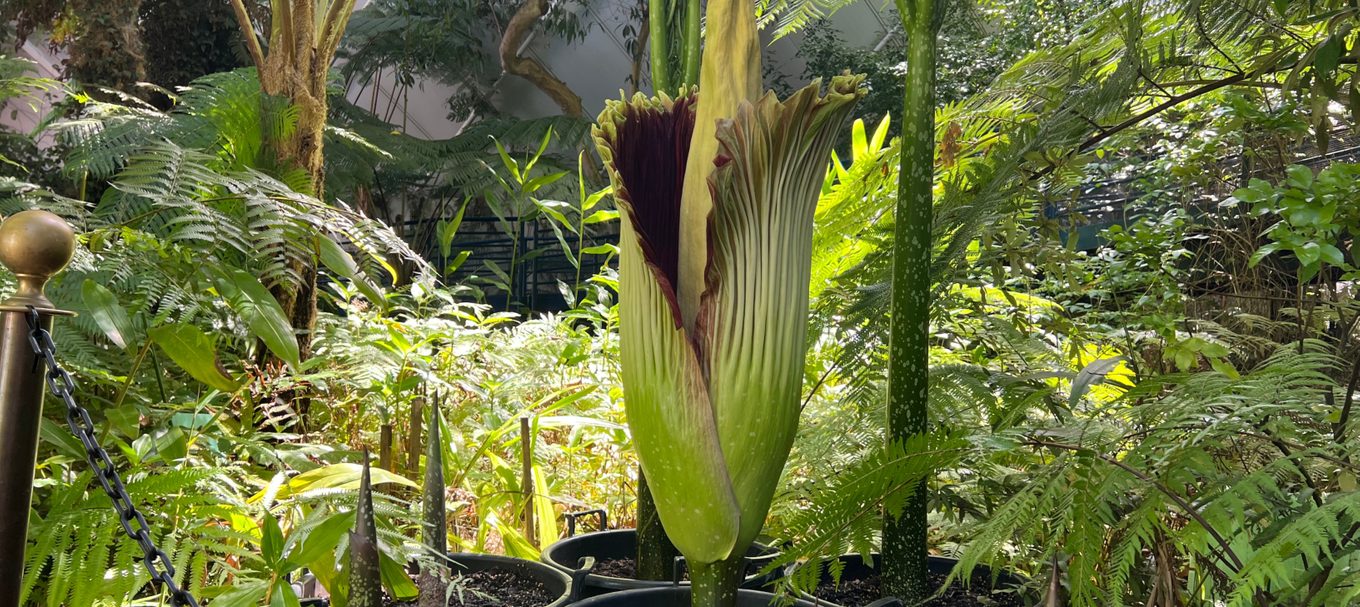
South Australia’s rare smelly corpse flower has bloomed
Did you know that Adelaide Botanic Garden is at the heart of a global conservation effort to protect the highly endangered corpse flower?
You’ll smell it before you see it - the Titan Arum (Amorphophallus titanum), commonly known as the corpse flower, captured the imagination of visitors to Adelaide Botanic Garden who were lucky enough to catch a glimpse, and whiff, of the stinky bloom which only flowers for 48 hours.
The plant, famous for smelling like rotting flesh, produced an inflorescence (group of flowers) for the first time in its 10-year life cycle last month. It's the 12th Titan Arum to flower in the Botanic Gardens and State Herbarium (BGSH) under the care of Horticultural Curator of Plant Propagation, Matt Coulter.
The history
The Titan Arum population has declined rapidly due to rainforest deforestation for palm oil in Indonesia. This has led to less than 1,000 plants left in the wild and where conservation efforts began in the BGSH. In 2006, three donated seeds were received from Titum Arum’s native habitat which all successfully grew into flowering plants.
The plants conservation status was upgraded from vulnerable to endangered meaning it became less likely that more seeds would be available. In 2013, the BGSH began a propagation trial to cultivate more plants by using leaf cuttings from established plants
The trial was a huge success and BGSH now has approximately 100 Titan Arum plants – thought to be one of the largest collections in the world.
Why is this important?
The most recently flowered plant was the first of the 100 propagated plants to reach the flowering phase of its life cycle. Plants flowering from leaf cuttings means many more Titum Arum’s will flower in the coming years.
This is significant conservation success for South Australia’s Titan Arum program and global conservation efforts.
These propagation techniques, samples for DNA genotyping, plant tubers (the special storage stem of certain seed plants) and strange growth occurrences are shared with institutions across the world who are also looking out for the species to protect the future of the corpse flower.
Want to know more about the corpse flower? Check out our story here.





